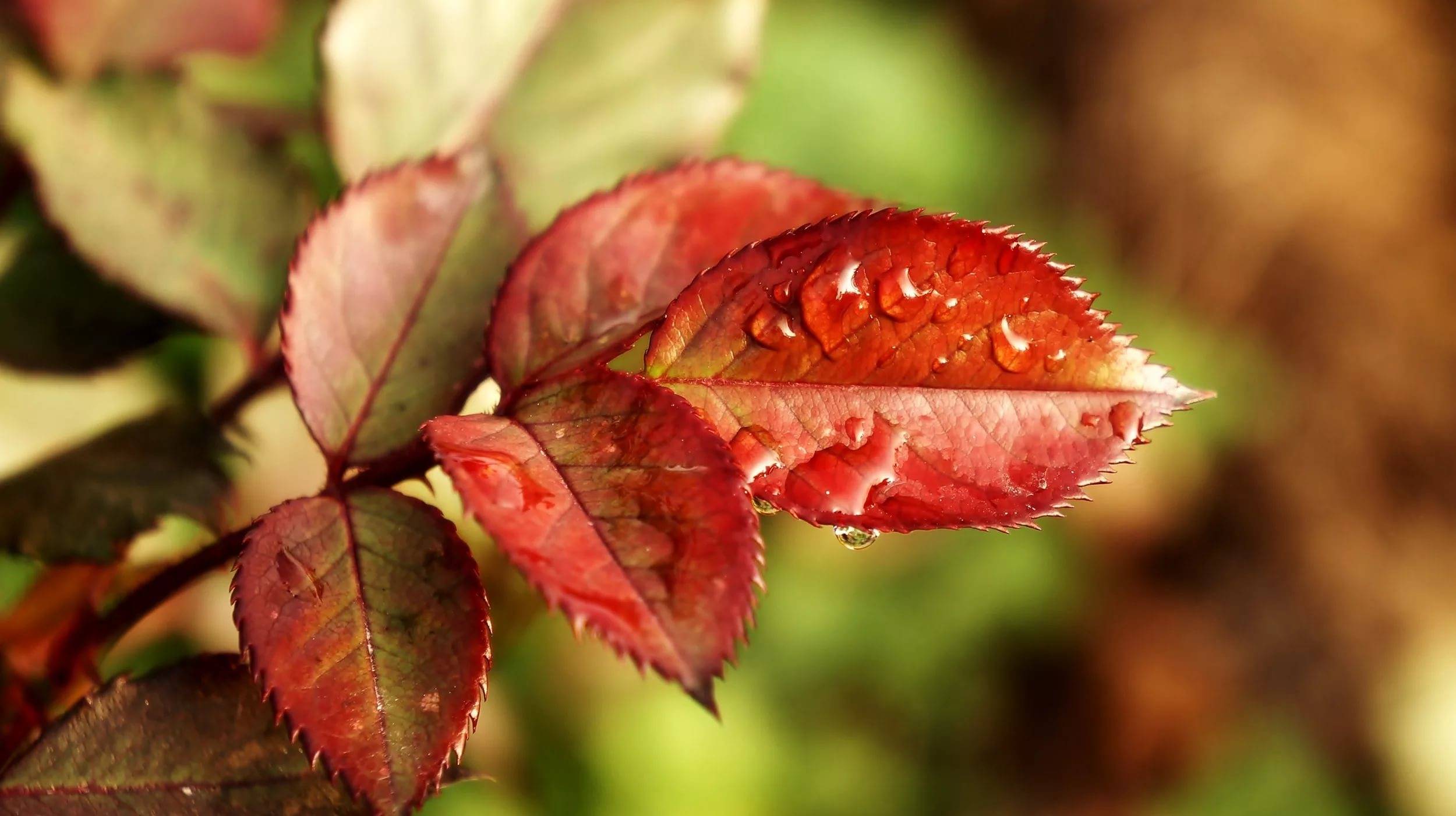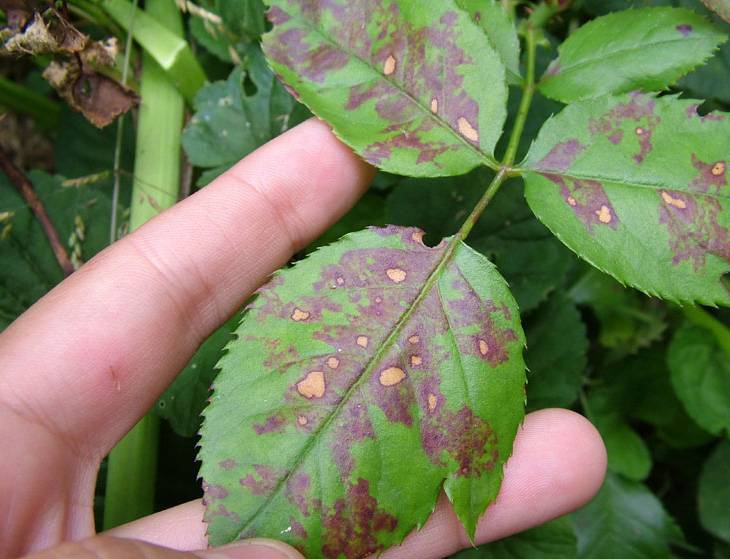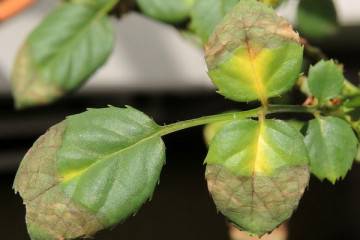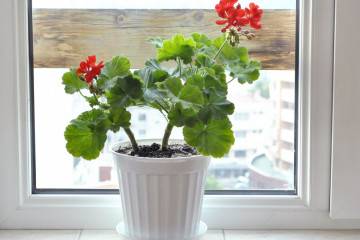Why does a rose have red leaves in the garden - reasons
Content:
Florists who are new to floriculture often have no idea why a rose has red leaves. Such a problem can really cause considerable anxiety, especially if not one bush turns red, but the entire rose garden. But if the leaves of the rose turn red, what to do must be decided quickly. This is another problem, in addition to the lack of understanding of the cause of the color change, requiring a solution.
Why do the leaves, stems and shoots of roses turn red
The redness that appears on the leaves and shoots of rose bushes upsets many growers, because against this background even the most beautiful buds look less advantageous. It is necessary to identify why the leaves of the rose turn red as soon as possible.
Is it a problem or a norm
There are natural and unnatural causes of redness. The latter include the defeat of the bush by pests and various diseases. If nothing like this is observed, then you should not worry. The leaves will turn green again, just wait a little.
Natural causes of redness
The natural reasons for the appearance of red spots or changes in the color of the entire flower include:
- varietal affiliation. In spring, red leaves of a rose, the cause of the discoloration of which is unknown, appear frequently. Usually this phenomenon is observed in plants with red buds. The red pigment produced by them is not completely consumed, the residues are redirected to the leaves;
- change of habitat. If the rose was transplanted from partial shade or shade to a well-lit area of the garden, then the stress experienced by it prompts the plant to produce excess pigment that stains the stems and leaves;
- lack of minerals. If the rose lacks, for example, nitrogen, then bright red spots appear on the old leaves, while the young leaves remain green. With a lack of phosphorus, a lilac border along the edge of the sheet is also added to the red color. Lack of magnesium is manifested in reddened veins and remaining green leaves. Potassium deficiency occurs if the green parts of the plant first turn yellow and only then turn red.
Redness due to disease and pests
Redness signals the grower that the plant is sick or affected, for example:
- stem cancer. It is provoked by a fungus living in the soil or on the plant itself. It begins to develop actively with waterlogging of the soil under the bushes and oversaturation of the soil with fertilizers;
- downy mildew. If the leaves are covered with yellow spots, and then curl up and turn red, then the bush is infected with downy mildew. This type of fungus begins to multiply if it is warm and humid outside. A rainy summer is a reason to reduce the number of watering and fertilizing in the country.
Causes of malignant redness
If not individual leaves and stems or the crown have become burgundy, but all the plants in the planting, then we are talking about a serious problem, the bushes must be rescued immediately.
Lack of nutrients
In the spring, the rose is missing:
- nitrogen. If the shortage is critical, then this is manifested not only in the changed color of the green parts of the plant, but also in the growth arrest, loss of attractiveness. The rose becomes weak and unsightly;
- phosphorus. The plant develops poorly, its roots are weak. Due to the lack of phosphorus, a purple border appears. If the rose is not fed on time, there will be no ovary on it, respectively, you can forget about flowering in the current spring-summer period;
- magnesium. The danger lies not only in the reddened leaves and the general unsightly appearance of the plant, but also in the exposure of the stems. All the leaves can simply fall off, which will affect the condition of the bush extremely negatively.
Transplant from a shaded area to a sunny area
If an old plant is transplanted to a new location, it can get sick or express its dissatisfaction by changing the color of the leaves. This usually happens when a rose is transplanted from shade to light. In the spring, it is better not to do this, the bush will lose its attractive appearance, the leaves may even fall off.
Autumn planting is preferable. In this case, the leaves may also turn red, but this will happen in the fall, and by spring the bush will get used to the new environment, and the amount of pigment thrown into the leaves will be reduced to the required rate.
What diseases cause redness
If we are not talking about downy mildew or burns, then attention is paid to the possibility of rust infection. This fungal disease causes the death of the leaves first, then the stems and the whole plant.
You can determine the presence of rust by the red pads that have appeared on the sheet plates. Over time, they cover the entire leaf. The difference between fungal infection and natural reddening of the leaves is clearly visible. There is no way to confuse illness with something else. Climbing rose varieties are most prone to rust infection.
What to do if a rose bush turns red
If the bush turns from green to red, you need:
- inspect it for damage. Perhaps, during hilling, the stems were damaged, and pests or bacteria penetrated into the plant through the resulting wounds. If damage is found, every effort is made to heal faster;
- draw up a schedule of watering and fertilizing and strictly follow it. It is highly likely that the bushes receive too much moisture and nutrients, or, conversely, do not receive the element they need. The graph will help you understand what is being done wrong and when by increasing or decreasing the dosage. In rainy weather, they try to water the rose less often, the amount of dressings is also reduced;
- try to transplant the bush to a new location. It helps both when dealing with pests and when trying to get rid of a particular disease. In both cases, preventive spraying of plants with insecticides and pruning of damaged, dried parts will not be superfluous;
- shade the plant from the sun. Some types of roses do not like direct sunlight at all.If they grow in open areas, then it is recommended to plant several tall trees or shrubs, a green hedge nearby. If it is just an excess of light, then after a while, not only red, but also normal green leaves will appear on the plant;
- feed with nitrogen and other fertilizers. Top dressing should go on schedule. If traditionally the rose is fed 3 times per season, then there is no need to rush to carry out the 4th one. It is better to do everything right by planning the application of the appropriate fertilizers as early as next season;
- make sure that the cause of redness is not related to varietal characteristics. If only red roses grow on the site, then it is not necessary to expect that all the stems and their leaves will be of an exceptionally bright green hue. The red pigment that colored the petals will soon show itself in the green part of the plant.
How to fix the problem and prevent
How to fix the problem depends on the source of the problem. So, the lack of phosphorus is compensated by the introduction of superphosphate and peat into the soil. Magnesium is replenished by regularly feeding the bushes with ash solutions. To protect the rose from burns:
- fertilize it only until July; in August, fertilizers are not applied with rare exceptions;
- in winter and summer heat, they cover the bushes, using, for example, special covers;
- in the spring they are sprayed with copper sulfate.
When downy mildew is detected, the stems and leaves killed by the fungus are cut off, the exposed areas are treated with vitriol or foundation. For plant protection:
- monitor the amount of fertilizers introduced into the soil;
- before planting, the seedlings are dipped in a solution of copper sulfate 1% and kept in it for 15-20 minutes;
- periodically treat plantings with soapy water, destroying aphids and other pests that weaken plants;
- disinfect tools used when planting or transplanting roses;
- regularly inspect the bushes for damage, removing old and dried stems;
- treated with Bordeaux liquid.
Well-groomed, receiving all the necessary nutrients, roses almost never get sick. And if something strikes them, then coping with the problem is much easier than trying to cure a weakened plant. Redness on the leaves is not a cause for panic. It is important to understand that for some varieties, this color of the leaves is normal. If the plant does not belong to this, they are looking for the cause of the problem, identify it, paying increased attention to the diseased rose.




















